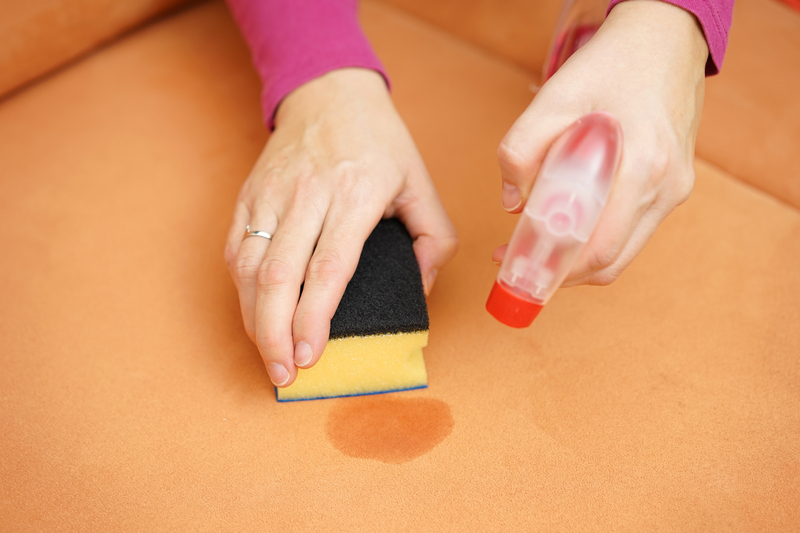How to Achieve a Long-Lasting Mold-Free Bathroom
Posted on 19/08/2025
How to Achieve a Long-Lasting Mold-Free Bathroom
A mold-free bathroom is every homeowner's dream. Bathrooms have all the ingredients for stubborn mold: warmth, moisture, and limited ventilation. Left unchecked, mold isn't just unsightly--it can also cause structural damage and health issues for you and your family. In this comprehensive guide, you'll discover proven strategies and expert tips for ending the relentless cycle of cleaning up mold and watching it return. Read on to learn how to achieve a long-lasting, mold-free bathroom that stays fresh and healthy for years to come.
Understanding Bathroom Mold: Causes and Consequences
Why Does Mold Thrive in Bathrooms?
Mold is a type of fungus that reproduces through tiny airborne spores. While mold spores exist everywhere, they only begin growing when they land on moist surfaces, making bathrooms an ideal breeding ground. The combination of hot showers, poor ventilation, and absorbent materials like grout and drywall creates the perfect environment for mold to form and flourish.
- Humidity: Hot water showers and baths raise humidity levels quickly.
- Poor ventilation: Steam has nowhere to escape and condenses on walls and ceilings.
- Organic material: Soap scum, dust, and even certain paints can feed mold.
- Neglected cleaning: Infrequent cleaning allows spores to anchor and multiply.
Health Risks and Structural Impact
Bathroom mold is more than an eyesore. Prolonged mold exposure can trigger:
- Allergic reactions (sneezing, watery eyes, rashes)
- Asthma attacks
- Respiratory infections
- Sinus congestion
In severe cases, unchecked mold can damage drywall, rot wood, loosen tiles, and undermine the structural integrity of your bathroom. Clearly, keeping your bathroom mold-free is essential for both health and home value.

1. Proactive Design for a Mold-Free Bathroom
Choosing Mold-Resistant Surfaces
If you're renovating or building a new bathroom, select mold-resistant materials wherever possible:
- Ceramic, porcelain, or glass tiles: Less porous, easier to clean, and inhospitable to mold.
- Mold-resistant drywall (green board or cement board): Resists absorbing and holding moisture.
- Semi-gloss paints with mildewcide additive: Prevents growth on painted walls and ceilings.
- Sealed grout or epoxy grout: Blocks moisture from leaking into walls or floors.
Thoughtful Bathroom Layout
- Strategic window placement for natural ventilation and sunlight.
- Ample air gaps between major fixtures and walls to promote airflow.
- Wall-mounted vanities and toilets allow for easier cleaning underneath.
2. Managing Moisture: The #1 Key to Mold Prevention
Ventilation: Your First Defense
Moisture control is fundamental for long-term bathroom mold prevention. Here's how to outsmart mold by banishing humidity:
- Install a high-quality exhaust fan: The bathroom fan should vent directly outside (not into the attic) and be sized to change the room's air at least eight times per hour.
- Run the fan during and after showers: Let it run for 20-30 minutes after using hot water to remove lingering moisture.
- Open windows and doors: If possible, open windows during and after bathing. Keep the door open when not in use to promote airflow.
- Consider a dehumidifier: In bathrooms with chronic humidity, a small dehumidifier can pull water from the air and prevent mold growth.
Effective Waterproofing Techniques
- Seal grout lines: Waterproof sealers make grout less porous and prevent water seepage behind tiles.
- Check for leaks: Regularly inspect under sinks, around toilets, and behind/under tubs. Fix drips and leaks immediately.
- Waterproof caulking: Use silicone-based caulking around tubs, showers, and sinks. Re-caulk any splits or gaps promptly.
- Shower doors or quality curtains: Make sure water stays within wet zones and doesn't splash onto dry walls or floors.
3. Cleaning Routines That Keep Bathrooms Mold-Free
Establish a Cleaning Regimen
A regular cleaning schedule is crucial for maintaining a mold-free bathroom. Frequent, targeted cleaning eliminates the biofilm where mold takes hold. Follow these expert-recommended guidelines:
- Spray down wet areas daily: After each shower, rinse walls, doors, and floors to remove soap residue and organic debris.
- Wipe with a squeegee: Squeegees remove excess moisture from tiles, doors, and walls--an easy way to prevent mold growth.
- Weekly disinfecting: Scrub tile, grout lines, caulk, glass, and plastic surfaces with a bathroom-safe disinfectant.
- Monthly deep cleans: Treat high-risk areas (shower corners, behind toilet, sink overflow) with a mold-killing solution like hydrogen peroxide, white vinegar, or a commercial anti-mold cleaner.
Targeting the Most Common Mold Hotspots
Not all areas are created equal when it comes to mold. Focus your efforts on:
- Shower and tub corners and grout lines
- Ceilings above the shower
- Sink and countertop edges
- Behind and under the toilet
- Window sills and ledges
Routine cleaning along with quick attention to problem spots will help you maintain a mold-free, beautiful bathroom for the long term.
4. Best Practices: Mold-Free Bathroom Maintenance
Daily Habits for Lasting Results
The right daily routines make a real difference. Adopt these mold-fighting habits to keep your bathroom fresh:
- Always hang up towels and bath mats to dry instead of leaving them bunched on the floor.
- Wipe down and dry surfaces after each shower, especially glass, tiles, and metal fixtures.
- Keep shampoo, soap, and other items off the floor to allow for complete drying underneath.
- Empty the trash regularly to prevent organic matter from feeding mold.
Green Plants and Mold Prevention
While many people add plants to bathrooms for aesthetics, some absorb excess humidity and can help keep the environment in check. Try moisture-loving, mold-deterring plants such as:
- Bamboo palm
- Boston fern
- Orchids (which thrive in humidity)
- English ivy
Repair and Replace Promptly
- Address water stains or peeling paint immediately as these are warning signs of excess moisture.
- Replace old, cracked, or permanently discolored caulk and grout promptly.
- Refinish or resurface worn tiles or bathtub enamel that allow moisture to seep underneath.
5. Natural Solutions for a Mold-Free Bathroom
Homemade Anti-Mold Treatments
If you prefer non-toxic remedies, several household ingredients can help keep your bathroom free from bathroom mold:
- White vinegar: Spray undiluted white vinegar on affected areas, let sit for an hour, and rinse well.
- Baking soda: Mix with water to form a paste, apply to grout/mold spots, scrub, and rinse.
- Hydrogen peroxide (3%): Spray directly onto mold, wait 10 minutes, scrub, and wipe clean.
- Tea tree oil: Combine 1 teaspoon in a cup of water, spray surfaces, and don't rinse for lasting effect.
Use these methods as part of your regular cleaning routine for a safe, sustainable approach to bathroom mold removal.
6. Addressing Existing Mold: What to Do If You Spot It
How to Remove Established Mold
If you've noticed a musty odor, discoloration, or fuzzy patches, act fast! Here's how to tackle existing bathroom mold:
- Wear gloves and a mask to avoid inhaling spores.
- Ventilate the area well (open a window, run a fan).
- Spray affected surfaces with a mold cleaner (store-bought or homemade options above).
- Scrub thoroughly using a brush or sponge. Pay special attention to grout and caulk.
- Rinse and dry surfaces thoroughly.
- If mold recurs or covers a large area, consult a professional mold remediation service.

7. Frequently Asked Questions: Mold-Free Bathrooms
What is the best way to prevent mold in showers?
Ventilation and drying after every use are crucial. Use a squeegee after every shower, keep the exhaust fan running, and periodically treat grout and tiles with anti-mold spray.
How often should I clean my bathroom to keep it mold-free?
A quick wipe-down daily and a deeper clean once a week are recommended for maintaining a mold-free bathroom.
Is bleach good for bathroom mold removal?
While bleach kills surface mold, it doesn't penetrate porous materials deeply. Consider hydrogen peroxide or vinegar as safer, effective options, especially for grout and caulk lines.
Should I replace moldy caulk or grout?
Yes. Severely moldy, stained, or crumbling caulk and grout should be scraped out and replaced with fresh, mold-resistant products.
Conclusion: Your Blueprint for a Mold-Free Bathroom
Achieving a permanently mold-free bathroom is absolutely possible with the right knowledge and persistent effort. Start with smart design choices--opt for mold-resistant materials, proper bathroom ventilation, and waterproofing. Make daily drying and careful cleaning a habit, and stay vigilant about repairs and leaks. Use natural anti-mold methods and address signs of mold immediately to prevent recurrence.
By implementing these expert strategies for bathroom mold prevention, you'll enjoy a clean, healthy, and beautiful space that adds value to your home and safeguards your family's well-being. The journey to a lasting mold-free bathroom begins now--let these tips be your guide to a fresher, safer, and more enjoyable bathroom environment!




